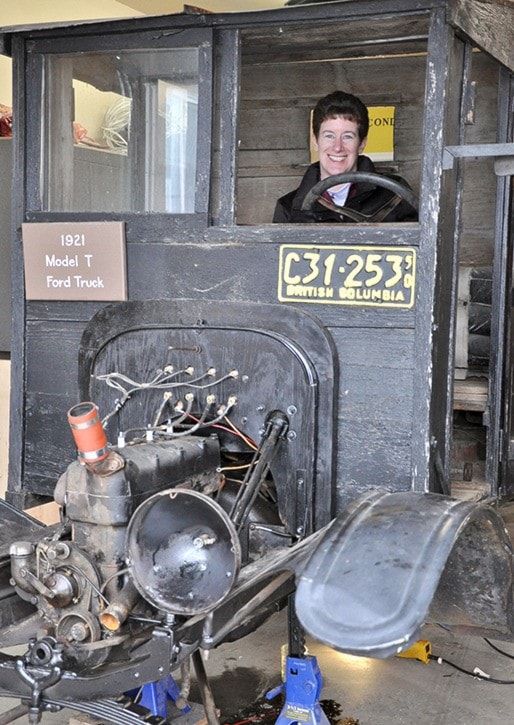At nearly 100 years old, the Creston Museum’s 1921 Model T Ford truck is getting a new lease on life, with a project underway to prepare it for this year's Creston Valley Blossom Festival parade — where it will make its second appearance, and the first under its own power.
With its homemade wooden cab, the truck is a unique and well-loved part of the Creston museum’s collection, and excitement is already high in the community, even over the smallest details.
“I tell people I got to pump up the tires,” said museum manager Tammy Hardwick. “They go, ‘Really? You got to do that?’ ”
To keep the project on track, the museum is seeking donations for a total of about $500. A $1,000 donation from the Regional District of Central Kootenay Area B already helped replace the radiator and fan belt, and the Columbia Brewery donated another $1,000, which covered some parts and a contingency fund that’s slowly being used up.
“When you start to do this stuff, there are always surprises,” said Skip Bradford, Hardwick’s father and the project’s lead mechanic.

The unexpected included a broken radiator — possibly damaged by a crosspiece in the suspension — which was rebuilt to the original specifications by West Kootenay Radiator. For other pieces, Bradford discovered a Massachusetts company, Lang’s Old Car Parts (www.modeltford.com), which specializes in Model T parts.
“You can buy just about everything for this truck,” he said.
Brothers George, Robert and Joseph Derry, who were living in Moose Jaw, Sask, originally purchased it in North Dakota in September 1921. They brought it to a mining town near Sparwood in 1927, then moved to a 30-acre farm in Canyon in 1936.
In 1950, ownership of the truck was transferred to Yahk Pioneer Park Museum owner Robert Watt. When the museum went bankrupt in 1979, the Creston historical society purchased the collection, including the truck.
The original owners added a few things after buying it. One modification was an air pump to keep the gas flowing when going uphill. The truck came with a two-speed manual transmission, and they added a three-speed auxiliary transmission in 1926, which gave the truck six forward and two reverse speeds.
“Even in the 1920s, there were all kinds of options for trucks,” said Bradford.
It also has a number of “field modifications”, including brackets to hold the axle to the suspension, installed after the original bolts were stripped.
One of the most unique aspects of the truck is its homemade cab. At the time, it was possible to buy only the chassis and running gear, although Hardwick noted that it may have had a factory cab at one time. If so, it may have been wrecked in an accident; Bradford noted signs of damage. However, it has been well looked after — there is no rust despite its advanced age.
Originally about $400, the truck has about 21 horsepower. It was last off the museum grounds in 2003 for a visit to Kokanee Ford during Ford’s 100th anniversary, and previously in 2001 on a flat deck for the Blossom festival parade — until Scrap King moved it from museum to Bradford’s garage where it was easier to work on it.
Work on the truck is one of several projects underway by the museum’s antique engine club to restore engines and equipment to running condition in the interest of preservation and attracting visitors — who will quickly see that the Creston Museum is a place to experience history, not just look at it.
The museum has 11 stationary engines and several members of the club got a few running back in June, including a 1920 pump engine manufactured in Brandon, Man., and an engine made in Ottawa, Kansas. Any extra funds raised that are not spent on making the truck parade-ready will be used to help with the others.
“Once we get this up and running, we’ll have a go at those,” said Bradford.

